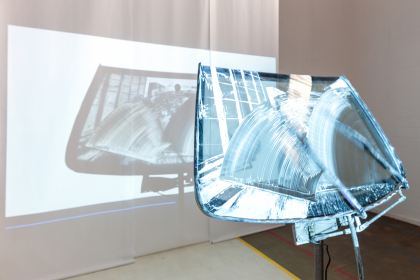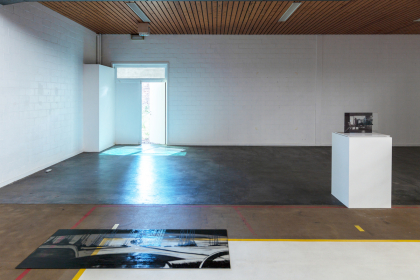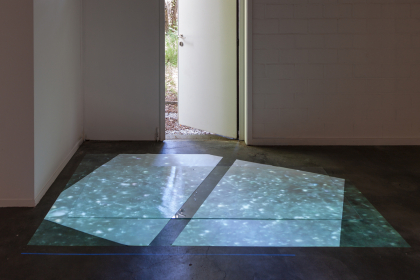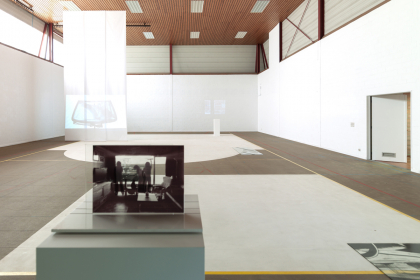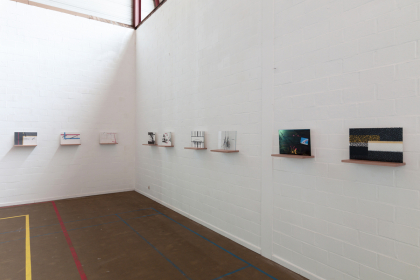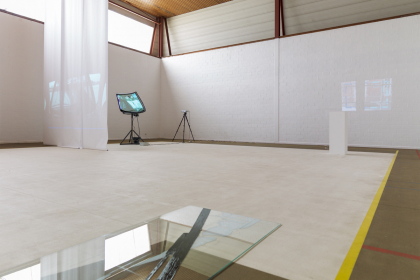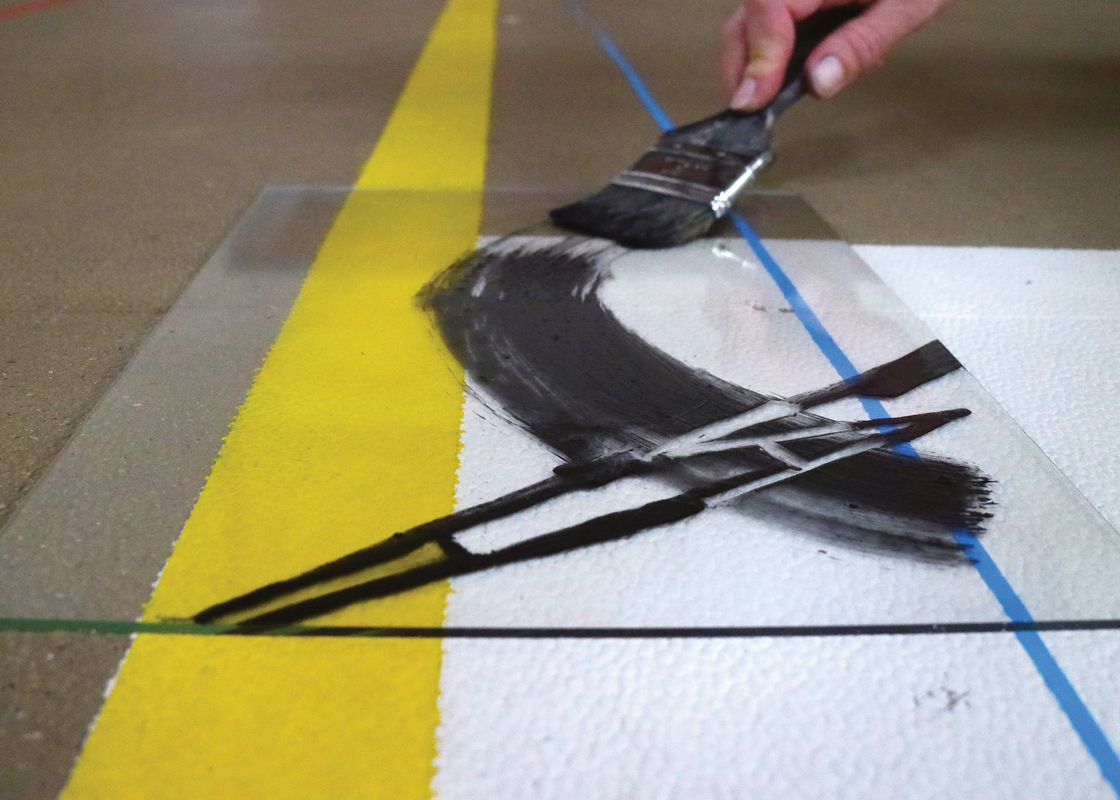
Line Boogaerts’ (b. 1986) works are ephemeral in nature, as though delighted to be our guests but reluctant to linger. What the artist paints on windowpanes will sooner or later be erased; the brittle, transparent material contains a hidden crack that will eventually cause it to shatter. In her collaborative performances with the dancer Ine Claes, Boogaerts investigates the interaction between video projection, drawing, movement and sound. Through a rhythm that alternates between layering and transparency, this installation combines human interaction with the artificial, mechanical environment of the window cleaners and the projection. The two performers draw their strength from what is happening in the moment itself. Why should art be the exception within a vanishing and expanding universe? Nothing lasts forever.
Because these works explore the boundaries of the transient, they are intimately connected to the places in which they are created. For example, Boogaerts regularly makes drawings on windows that reference the private lives of the people who live in the house. By directly applying them to the glass, they enter the public realm and make the window itself visible, like a temporary canvas. By erasing the drawings afterwards, the residents reappropriate their private spaces while simultaneously ‘maintaining their homes’ and returning the windows to their original function. Glass is a clever material: it enables us to look and think. It reflects.
In the former gymnasium behind the Whitehouse Gallery, Line Boogaerts also approaches the elements that structure this paradoxical space while simultaneously forging a connection with her own artistic practice. For example, the coloured lines on the floor, which have lost their original function of defining the rules, agreements or physical boundaries of a game. Like motorway signs or the icons on our computer screens, they are part of a graphic language that is stored within our bodies. Boogaerts combines this public iconography of traffic and the media with personal codes, more specifically with the knick-knacks that motorists hang from their rear-view mirrors like talisman. Each of her works is thus composed of multiple layers and screens: one window can contain another, and in a space without windows (!) she creates with cut-outs and projection screens. Behind the line unexpectedly acquires an extremely topical connotation: in the time of corona, an open door that admits the outside world is already imbued with the promise of freedom. Today, a windowpane is both a barrier and a blessing: allowing you to wave at your grandmother in the residential care home, for example. Listen, for a moment, to what the language conveys: the line in the title of the exhibition can allude to many things, such as a front line – in the military sense – a stop line, the horizon, or even a ray of light.
Eric Min

